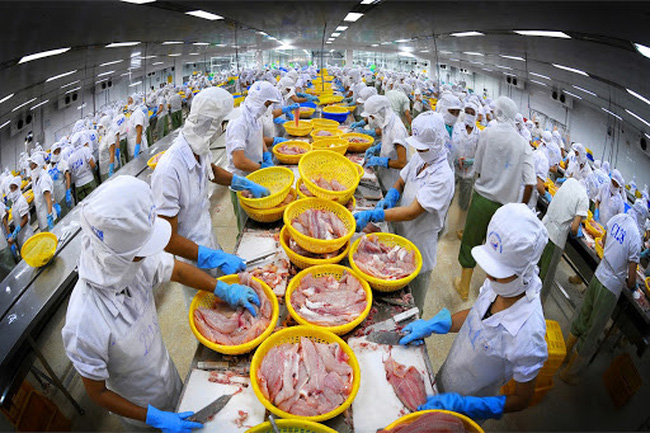Seafood situation in Vietnam
Jun, 29 2021
1. General situation
Our country, with a dense river system and a long sea-way, is very convenient to develop fishing and aquaculture activities. Vietnam's seafood production has maintained continuous growth over the past 17 years with an average increase of 9.07% per year. With the government's policy of promoting development, aquaculture activities have been strongly developed, production has continuously increased over the years, averaging 12.77% / year, making a significant contribution. into the growth of the country's total seafood production.
Meanwhile, due to the gradual depletion of the natural fishery resources and the level of fishing activities has not improved, the output of aquatic products from fishing activities has increased relatively low in recent years, with an increase in fishing activities. average 6.42% / year.

2. Source of raw materials in aquaculture:
In the fisheries sector, raw materials include seed, feed, aquaculture medicine and farming activities. Vietnamese seafood enterprises have not completely closed their entire raw material source process, so the shortage and quality of seafood raw materials is always a difficult problem for businesses.
3. Value chain and linkage among actors in the fisheries sector:
The ability to close production processes is important for seafood businesses. The more closed a business has, the greater the ability to autonomy in raw materials and the higher business efficiency. Conversely, the less self-contained enterprises, the more dependent on the outside, will easily lead to passivity in production, reducing business efficiency.
With growing demand and increasing quality requirements, the fisheries sector's operations require the participation of a number of financial institutions and fisheries quality accreditation agencies, which has made the relationship possible. between actors in the industry is getting tighter.
4. Sources of seed:
The seed source in the fisheries sector plays a very important role, it is the first step in the value chain of the fisheries sector, so it is likely to affect all other stages of the production chain. But currently, the quality of aquatic breeders in Vietnam is quite low.
For pangasius, the ratio of fry to fry is only about 20-35%. The quality of broodstock is low, has not been selected and standardized, so there is a phenomenon of seed degeneration. At present, the source of pangasius is mainly purchased from farming households with inadequate quality due to the limited technical level of farmers.
For shrimp, the quality of the seedling source is an alarming issue. Currently, the quantity of quarantined shrimp is not high, the broodstock is almost completely dependent on natural exploitation, so the quality is not uniform. The state management of shrimp seed still has many shortcomings right from the importation of broodstock.
5. Areas of strong aquatic activity in the country
Seafood production and export activities of Vietnam are scattered across the country with a diversity of aquatic species, but it can be divided into 5 major export regions:
The North Central and Central coastal regions: brackish water aquaculture, especially promoting the advantages of marine farming, focusing on a number of major subjects such as shrimp of all kinds, blood cockles, abalone, parallel fish. , cobia, red snapper ...
South Central Coast: aquaculture on all kinds of brackish water surface, with a number of main subjects such as tilapia, shrimp of all kinds ...
Southeast region: Including 4 provinces: Ninh Thuan, Binh Thuan, Ba Ria - Vung Tau and Ho Chi Minh City, mainly farm freshwater aquatic species in reservoir and brackish water fish such as grouper, cobia, fish. Tilapia, shrimp of all kinds….
The coastal areas of the Mekong Delta: including coastal provinces of the Mekong Delta such as Tien Giang, Ben Tre, Tra Vinh, Soc Trang, Bac Lieu, Ca Mau, Kien Giang ... This is an area of active seafood activities. Aquaculture activities on all types of water surface, especially shrimp, catfish, blood cockles, clams and some marine fish species.
Provinces in the region: including inland provinces but with quite dense river systems such as Hanoi, Binh Duong, Can Tho, Hau Giang, Dong Thap, An Giang, favorable for aquaculture Freshwater products such as: tra - basa fish, tilapia, carp ...
The Mekong Delta region, with its ideal conditions with interlocking canals and many areas bordering the sea, has become the main aquaculture and seafood export area of Vietnam. According to statistics, in 2011, the country had 37 provinces having seafood export enterprises, of which the provinces with the largest seafood export turnover were Ca Mau (mainly thanks to the large export turnover of Minh Phu, Quoc Viet), Ho Chi Minh City, Can Tho, Dong Thap, Khanh Hoa, Soc Trang ...
